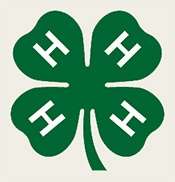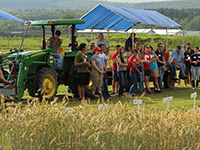Skill Level
Beginner, Intermediate, Advanced
Learner Outcomes
- Contribute to group planning and offering ideas.
- Practice agency to actively contribute to group outcomes.
- Feel a sense of belonging and accomplishment.
Life Skills
Decision-making, problem solving, critical thinking, planning/organizing, wise use of resources, communications, cooperation, social skills, conflict resolution, sharing, nurturing relationships, leadership, contribution to group, teamwork, marketable skills
Introduction
At the end of the program, it is important for the group to celebrate the hard work everyone put into learning and sharing, and planning, planting, and caring for the garden. The celebration can take many forms, it is important to incorporate youth voice into the planning process. Youth should be actively involved in making decisions and shaping what the celebration will be. Celebrations can offer opportunity for personal reflection and to strengthen connections among group members. This reflection and evaluation can be used in future program planning. The garden celebration can take many forms. Please encourage youth to be creative and have fun with it!
This garden celebration could look like:
- Celebratory harvest and potluck meal.
- Celebratory harvest, and packaging fruits and veggies to donate to a food pantry or sell at a farmers’ market.
- Garden potluck meal creating dishes inspired by what is growing in the garden.
- Garden meal and cooking competition using garden-inspired ingredients.
- A fruit and veggie taste test. The fruits and veggies can be harvested from the group’s garden or purchased.
- Creating a garden art mural or individual art projects for youth to take home with them.
- Garden games. This could be garden jeopardy or field day type games.
Before the Activity
Determine what date, time, and location are feasible for the garden celebration. Figure out what the budget will be for the celebration.
Activity
Guidelines for Celebration
Incorporate youth voice. Youth should be involved in planning the celebration. If there is money set aside for the celebration, share with the group how much so the group can decide how it will be spent. Do not dismiss any ideas in brainstorming, rather collect ideas and then assess what is doable. To compile ideas, the group could make a concept map on paper or virtually. Helpful software mapping tools could be Jamboard or Miro. Below are some guiding questions for group planning:
- Have youth think of a celebration they attended in the past. What were the best parts? What was fun? What did you enjoy? What parts were not enjoyable?
- How do we want to celebrate? What needs to be done? What role do people want to play? Who will do each part?
- Who will be a part of the celebration? If the group wants to invite people outside of the group, how to invite them?
- What is the budget? What is the menu?
Reflection and evaluation. Celebrations are times of joy and accomplishment. They offer opportunity for personal reflection and to strengthen connections among group members. Below are some activities and resources you can use for reflection and evaluation:
- Web of Connection: For this activity, you will need a ball of yarn and a space for the group to make a circle. As the ball is passed to each person, group members share a favorite group memory and something they will take away from the experience. Make sure each person does not let go of their piece of yarn as they toss the ball to someone else in the group; ideally the ball of yarn is passed to someone who is not standing next to the person holding the ball. Once everyone in the group had turn, a web of connection is created. This web represents the individuality of people’s experience and connections that tie them together. The web represents the support available to each person and the overall strength of the group.
- Cornell Garden-Based Learning’s Evaluation Toolkit contains numerous resources and activities using different evaluation methods including surveys, interviews, and observation.
Learn More
What is Youth Engagement, Really? ACT for Youth Center for Community Action










